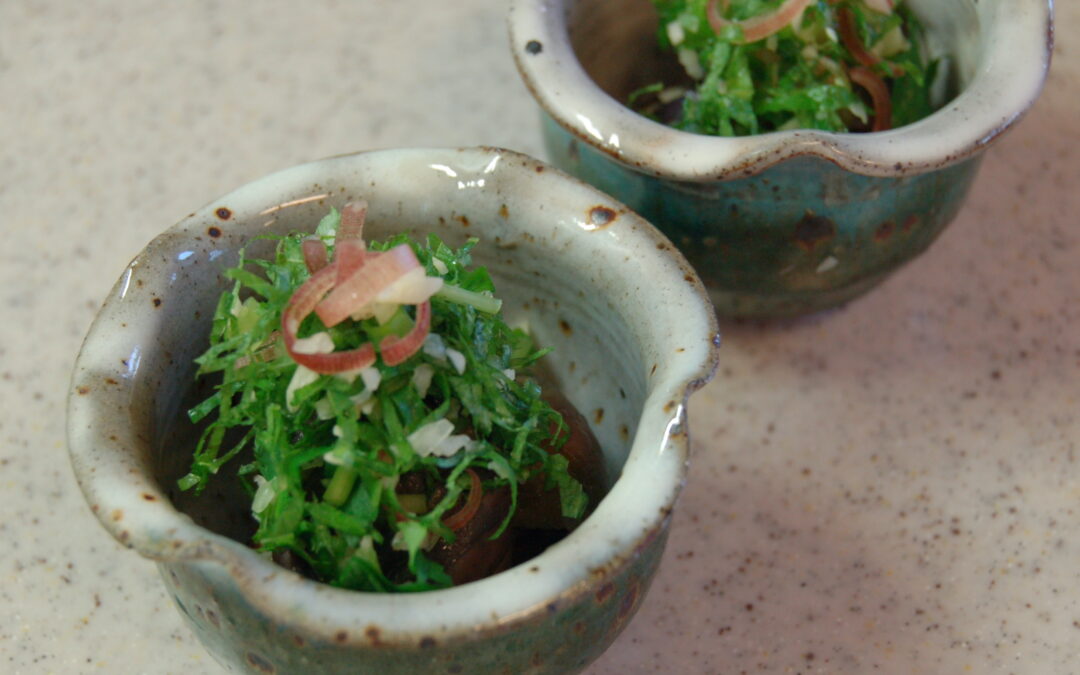
by Elizabeth Andoh | Jun 29, 2022 | Kitchen Culture, Summer
薬味YAKUMI A Lively Mixture of Aromatic Herbs Food cultures around the world employ various aromatic herbs and spices to stimulate the appetite, maximize flavor and promote healthful eating. Japan has a long history of using yakumi, condiments, to provide benefit to the...

by Elizabeth Andoh | Aug 19, 2021 | Kitchen Culture, Summer
Watermelon Rind TSUKÉMONO Making use of every edible part of a food — here the rind as well as the juicy flesh of watermelon — is part of the Japanese notion of kansha (appreciation). More than just a frugal approach to limiting food waste, kansha is a...
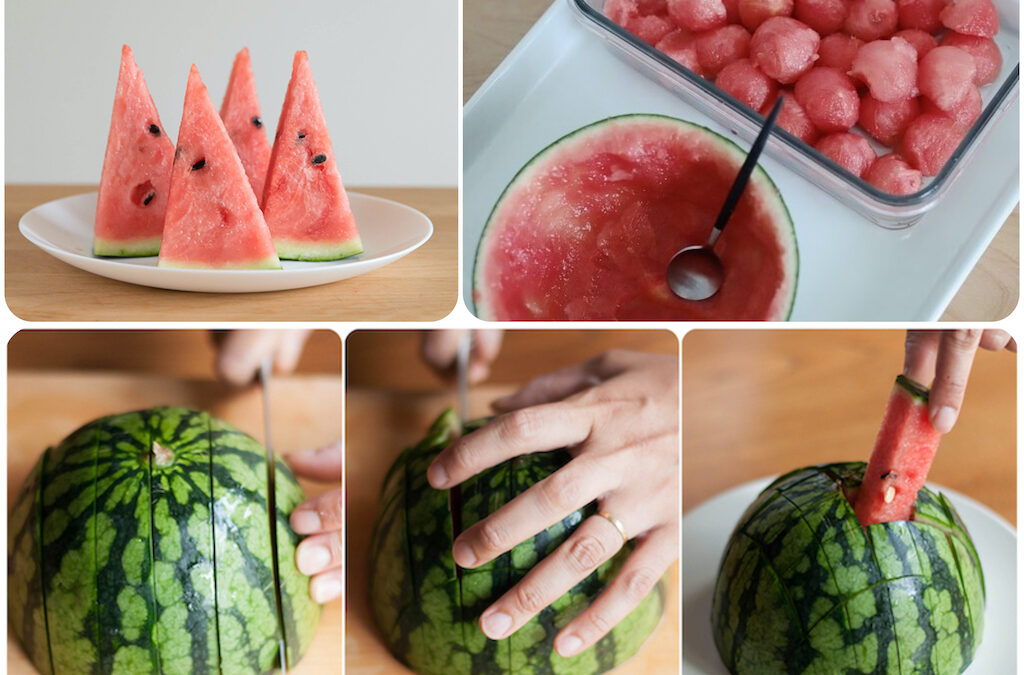
by Elizabeth Andoh | Aug 8, 2021 | Kitchen PROJECTS, Summer
Good to the last drop WATERMELON Most watermelons are quite large and (unless you are feeding a crowd) are not easily consumed in a single session. This Kitchen PROJECT is about finding ways to enjoy every bit of watermelon — flesh and rind — over a...
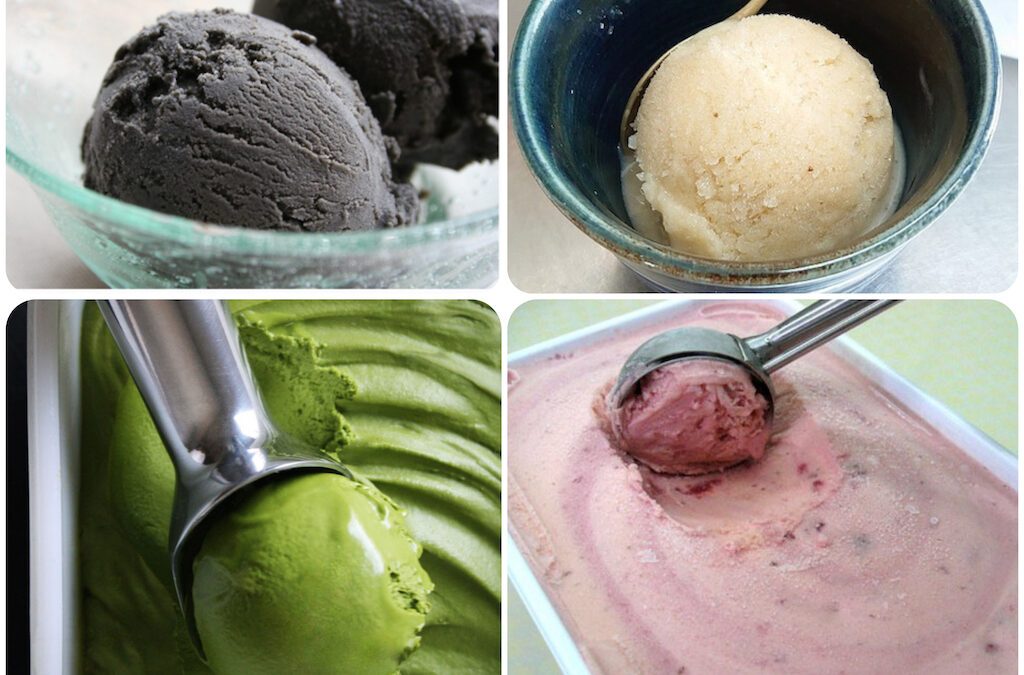
by Elizabeth Andoh | Jul 2, 2021 | Kitchen PROJECTS, Summer
Make FROZEN (amazake) ICES in your kitchen Using the basic description and recipe (for Banana-Ginger Ice) in the Kitchen Culture blog post, try making different flavors: Kuro Goma (Black Sesame), Matcha (Green Tea), and Ichigo (Strawberry) are especially tasty. KANSHA...
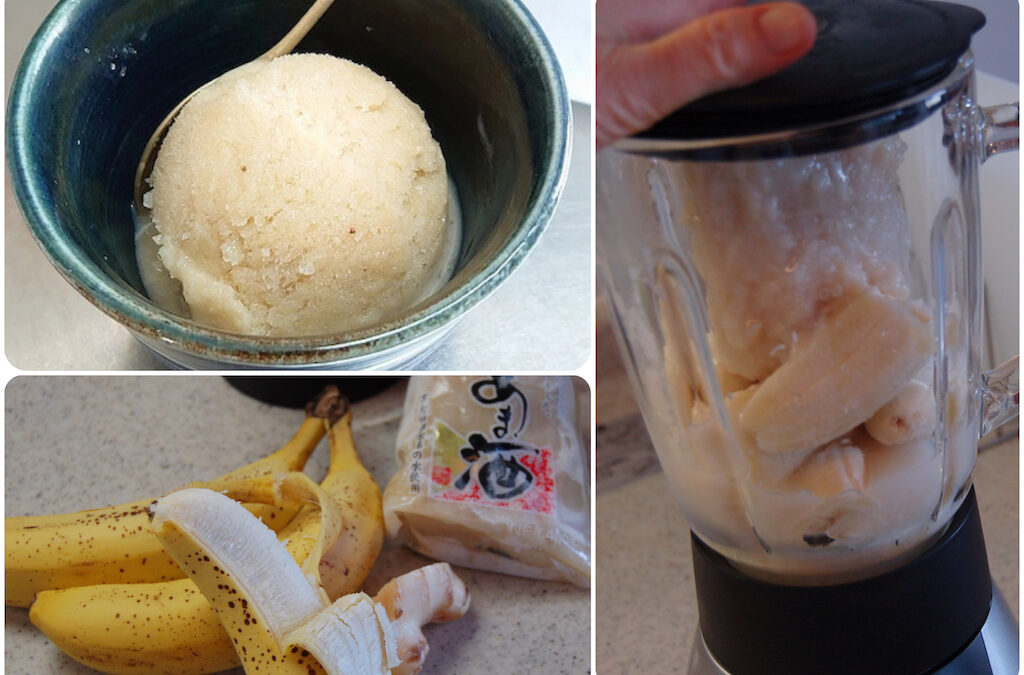
by Elizabeth Andoh | Jul 2, 2021 | Kitchen Culture, Summer
Frozen Ices made with AMA-ZAKÉ Ama-zaké has been part of the Japanese pantry for thousands of years. During the Muromachi period (1392-1573) ama-zaké consumption took on a regional identity: In and around Kyoto, it was sipped in the summertime as a stamina drink to...
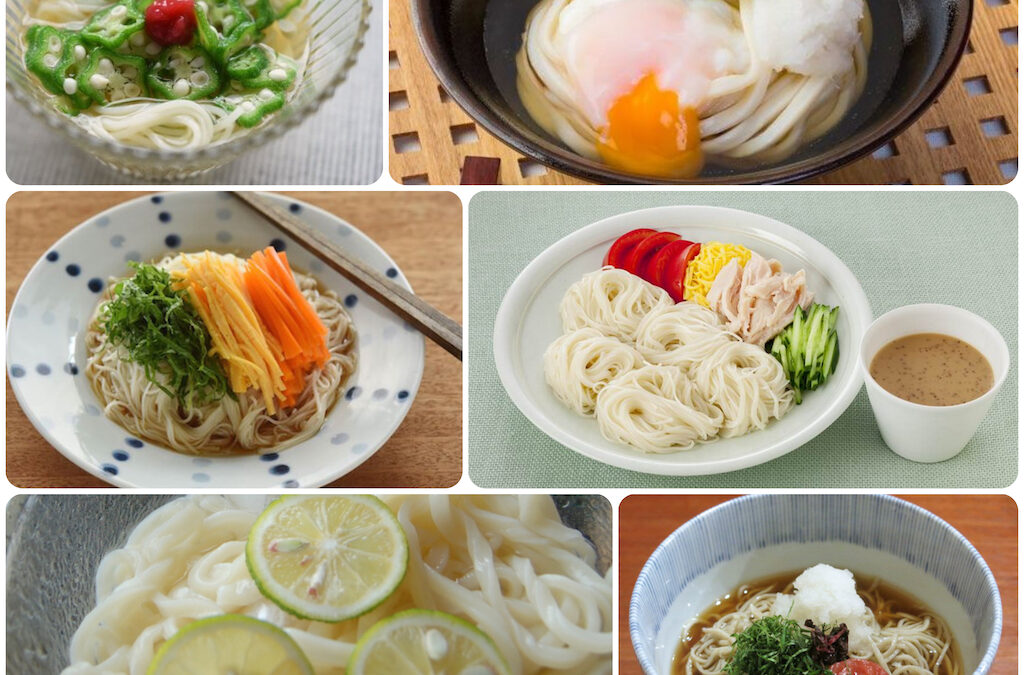
by Elizabeth Andoh | Jun 12, 2021 | Kitchen PROJECTS, Summer
Make a COLD NOODLE SALAD in your kitchen FIRST… choose your NOODLE: thread-thin sōmen … or thick, slithery-chewy udon … rustic wholegrain soba … or curly-springy chūka soba. NEXT… decide if you want to serve your noodles DIPPING-STYLE...

by Elizabeth Andoh | Jun 12, 2021 | Kitchen Culture, Summer
冷やし中華・Hiyashi Chūka For centuries, the Japanese have adapted and adopted foods and food ways from many culinary traditions. Asia in general, and China in particular, has probably been the greatest source of “inspiration” over the years. In fact the highly popular...

by Elizabeth Andoh | Jun 8, 2021 | Kitchen Culture, Summer
梅酒づくり Uméshu-Zukuri In Japan, early June is the time for UMÉ SHIGOTO (plum work), transforming the harvest of not-yet-fully-ripe fruit into a sweet liqueur (uméshu) and/or sour, lip-puckering salt-cured uméboshi. If you are able to source green, not-fully-ripe...
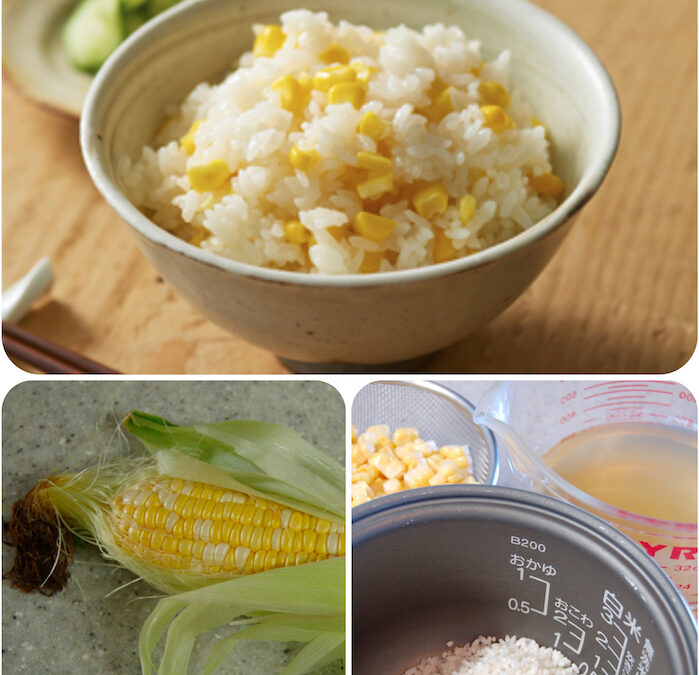
by Elizabeth Andoh | Aug 17, 2020 | Kitchen Culture, Summer, Year-Round
Corn-Studded Rice Tōmorokoshi Gohan 玉蜀黍ご飯 Summertime… bushels of fresh, sweet, corn at every market begging to be taken home and transformed into Tōmorokoshi Gohan: corn-studded rice. Prepared takikomi-style, rice dishes are cooked in a flavorful stock extracted...
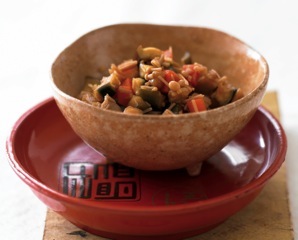
by Elizabeth Andoh | Jul 15, 2020 | Kitchen Culture, Summer
Photo from KANSHA © Copyright Leigh Beisch (Styled by Karen Shinto) 夏の福神漬けNatsu no Fukujin-ZukéSeven Good Fortunes of Summer Named after the Seven Gods of Good Fortune, Shichi Fukujin, this pickle is made from an assortment of chopped vegetables with the addition of...
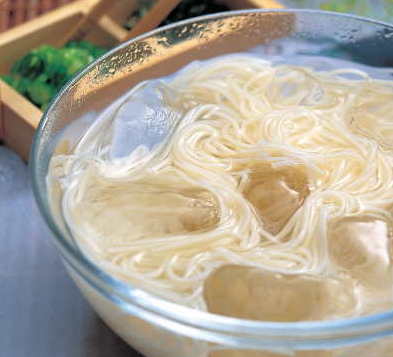
by Elizabeth Andoh | Jun 18, 2020 | Kitchen Culture, Summer, Year-Round
Survival strategy for hot, humid days: Chilled Sōmen Noodles-on-the-rocks! DOWNLOAD information on buying, storing and cooking sōmen and serving the noodles. © Photo by Leigh Beisch Styling by Karen Shinto ネバネバそうめんSlithery Sōmen Noodles Mouth feel (the way a food...

by Elizabeth Andoh | Jun 1, 2020 | Kitchen Culture, Summer
RAINY SEASON KITCHEN TSUYU (梅雨 literally, “plum rain”) comes to the Japanese archipelago every year as spring turns to summer. The constant dampness of tsuyu encourages the growth of kabi (mildew, and molds) requiring a strategy (taisaku 対策) … and...
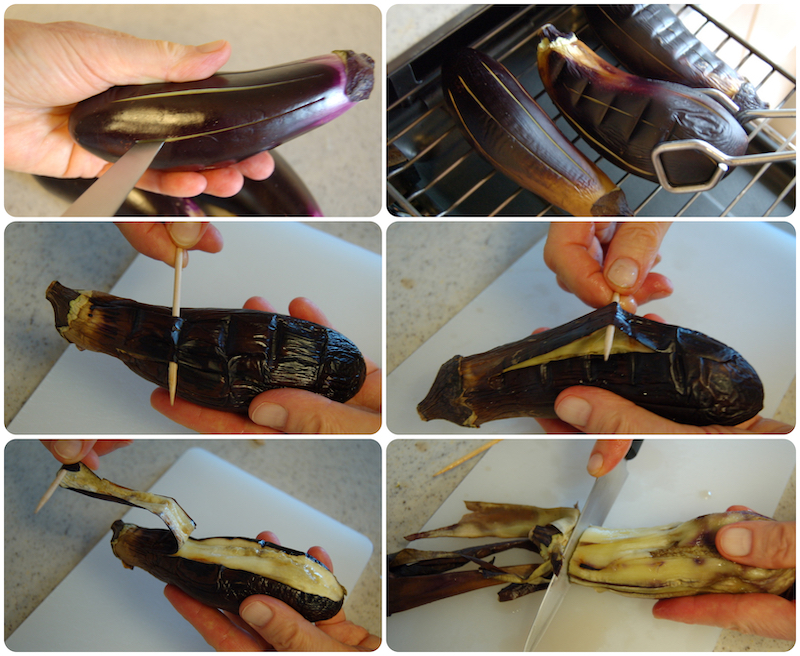
by Elizabeth Andoh | Sep 2, 2019 | Autumn, Kitchen Culture, Summer
Roasted eggplant, peeled and drizzled with soy sauce, garnished with flakes of smoky katsuo-bushi and some minced scallions. Throughout the summer months in Japan, plump and dark, tender-skinned eggplants can be found in every market and grocery store. As fall...
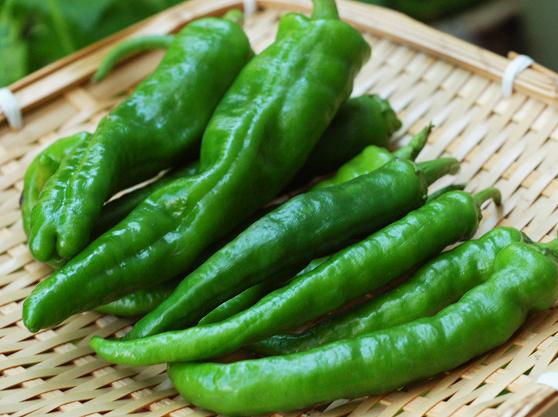
by Elizabeth Andoh | Aug 22, 2019 | Kitchen Culture, Summer
Manganji tōgarashi Manganji Tōgarashi 万願寺唐辛子 Manganji tōgarashi are mild, tender capsicums with an earthy-rich aroma. They typically run about 100 SHU (Scoville Heat Units) compared to jalapeno that average 5000 SHU. Manganji are named after the area near Maizuru City...
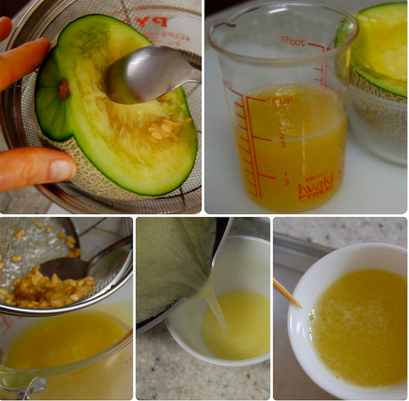
by Elizabeth Andoh | Aug 12, 2019 | Kitchen Culture, Summer
Luscious, ripe melon bursting with delicious juice… Not wanting to waste a single drop, I scrape the seeds into a strainer set over a bowl to collect the juice… to make aspic. In Japan, fresh fruit is often a gift item, especially melons that can be...
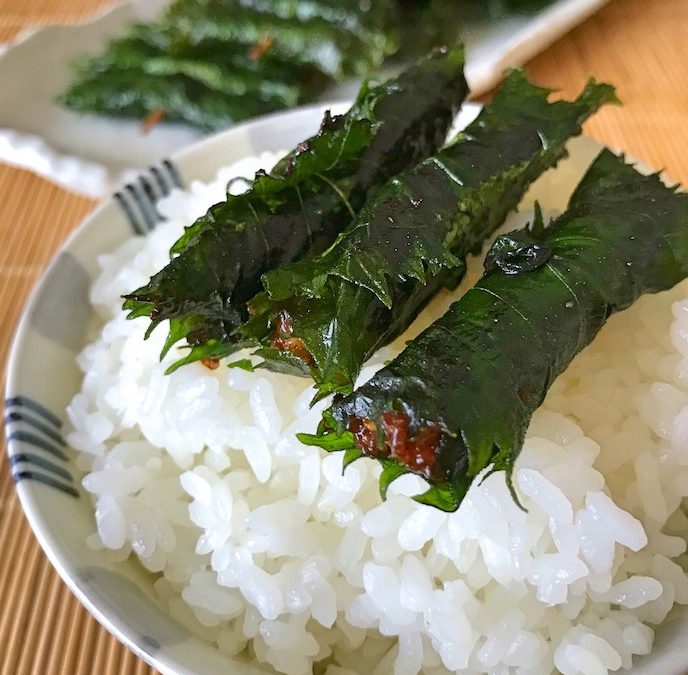
by Elizabeth Andoh | Aug 2, 2019 | Kitchen Culture, Summer
Shiso maki rolls, skewered and seared. Japan’s Tohoku region is justly famous for its walnuts – large, meaty orbs that produce an incredibly rich, aromatic paste when roasted and crushed – and its miso – a full-bodied red (burnished brown, really) fermented soybean...

by Elizabeth Andoh | Jul 22, 2019 | Kitchen Culture, Summer
Chopped eggplant, cucumbers, okra and herbs such as shiso and myōga make salsa-like Dashi 山形だし Yamagata Dashi Somewhere between a salsa and chutney, Yamagata’s summertime signature dish Dashi is a refreshing mixture of chopped vegetables and herbs. It often tops cubes...

by Elizabeth Andoh | Jul 2, 2019 | Kitchen Culture, Summer
HIYA YAKKO 冷奴 When you see an item on a menu being described as HIYA, it means that dish will be served chilled. Pictured above is classic Hiya Yakko, blocks of cold tōfu garnished with grated fresh ginger, chopped scallions and curly flakes of smoky, dry-roasted...
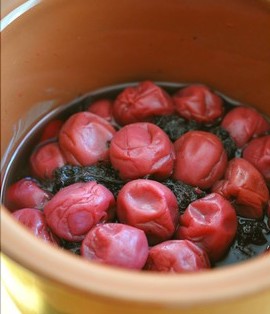
by Elizabeth Andoh | Jun 22, 2019 | Kitchen Culture, Summer, Year-Round
Uméboshi 梅干し and aka-jiso leaves After many weeks of bathing submerged in salty-sour, rosy-colored umézu this year’s plums are ready to be air-dried… the final stage of plum work (umé shigoto). What’s needed is a string of dry days, what’s known as umé no...




















